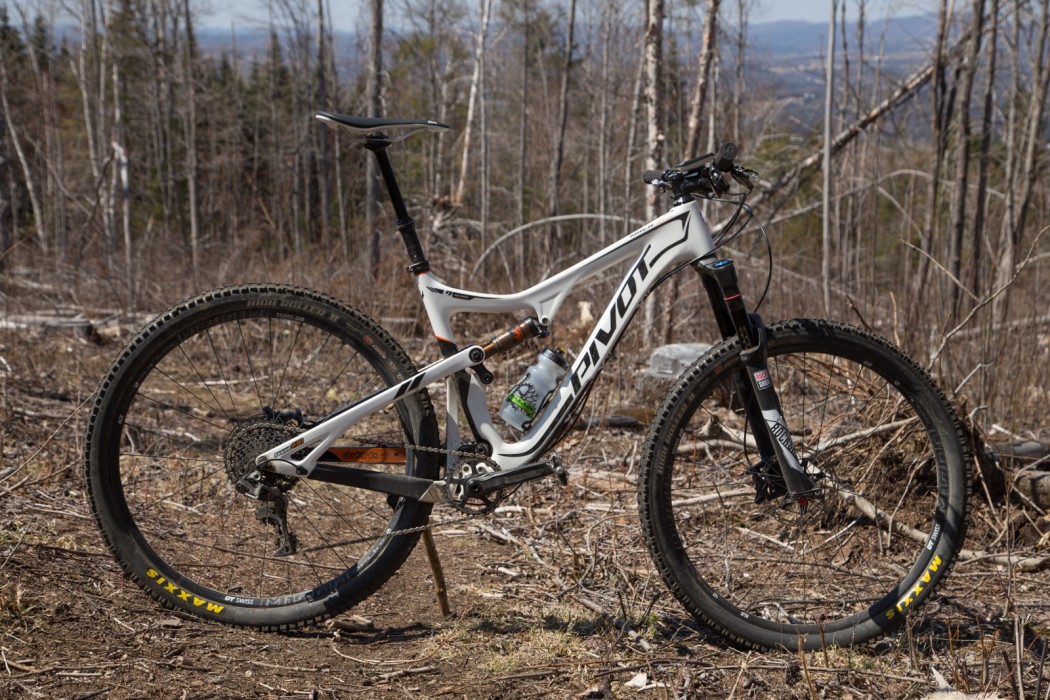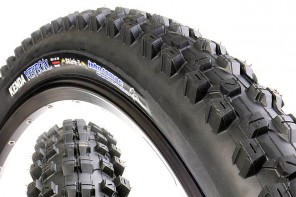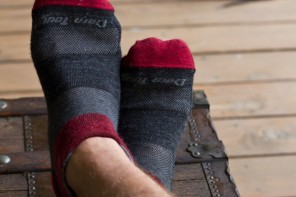In 2013, 27.5” wheels came on the scene like Donald Trump: making grandiose claims that they would make riding great again, which (unlike Trump) they did for the most part. The 27.5” wheel is a great compromise between maneuverability, rollability and speed maintainability. After having two, no three, no four different 27.5 bikes I have been supremely happy but always felt there was a certain je ne sais quoi missing. It was the feeling that the ewoks probably felt when first getting on a speeder bike going unnaturally unsafely fast through the twisty and tight trees of Endor.
We are only a few years from when 27.5’s bastardized 29” wheels, but now the bigger, more austere brother has mustered some strength and is coming back with fighting words. Smaller companies like Pivot and Transition are fueling this movement with the dawn of the reverse mullet style 29ers (party up front, business in the back).
PIVOT Mach 429 Trail
This year I will be doing a long term test on Pivot’s newest iteration of their award winning 429 design, the Mach 429 Trail. Pivot touts this bike as one with “a slack front end and a short back end that is fast, flickable, and energy efficient.” Living and working trailside at Kingdom Trails I will regularly take the bike to both ends of the spectrum: from some of the fastest, flowiest single track to the gnarliest that Burke Mountain has to throw at it, and everything in between.
Nuts and Bolts: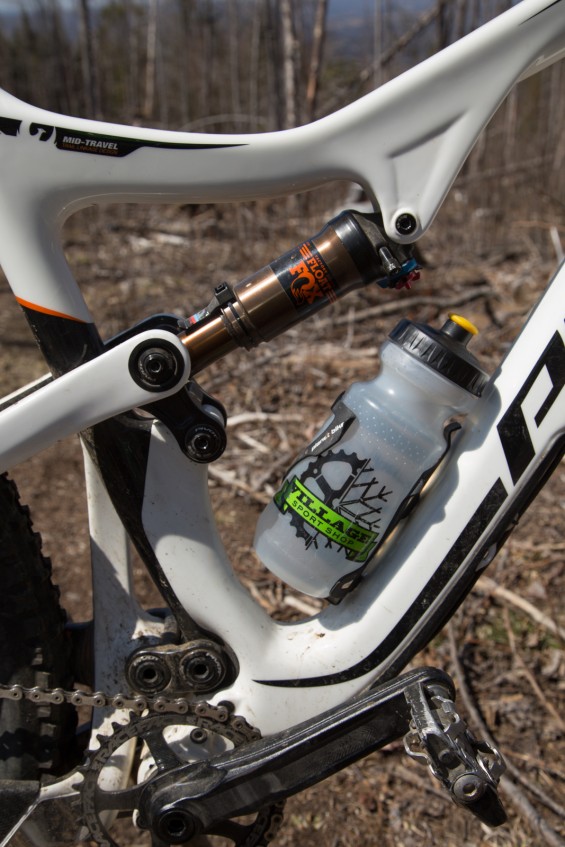
Testing Size: Large
Wheel Size: 29”or 27+
Front Wheel Travel: 130mm (140mm OK’ed)
Rear Wheel Travel: 116mm
Axles: BOOST
Top Tube: 24.75”
Head Tube Angle: 67.5 @ 130mm
Seat Tube Angle: 72.8
Chainstay: 17.45”
BB: 13.19”
Stack: 24.59”
Reach: 16.66”
The Build:
The Mach 429 Trail comes in eight different build kit option and two colors. I opted for the Sram X01 build kit which sells for $5,800. The build comes with Sram Brakes and Drivetrain, Raceface Cranks, DT Swiss Wheels and Fox Factory Suspension. Unfortunately, at $5800 the bike does not come with a dropper but for an additional $330 you can add a KS Integra post.
Personal Preference….
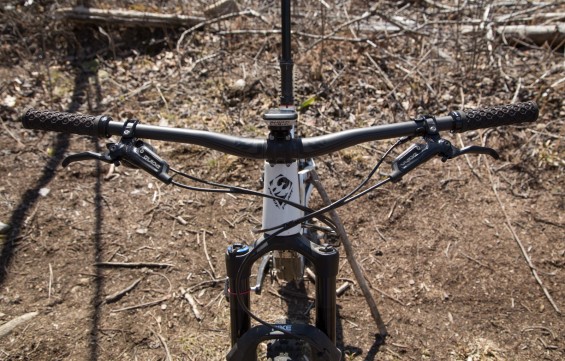
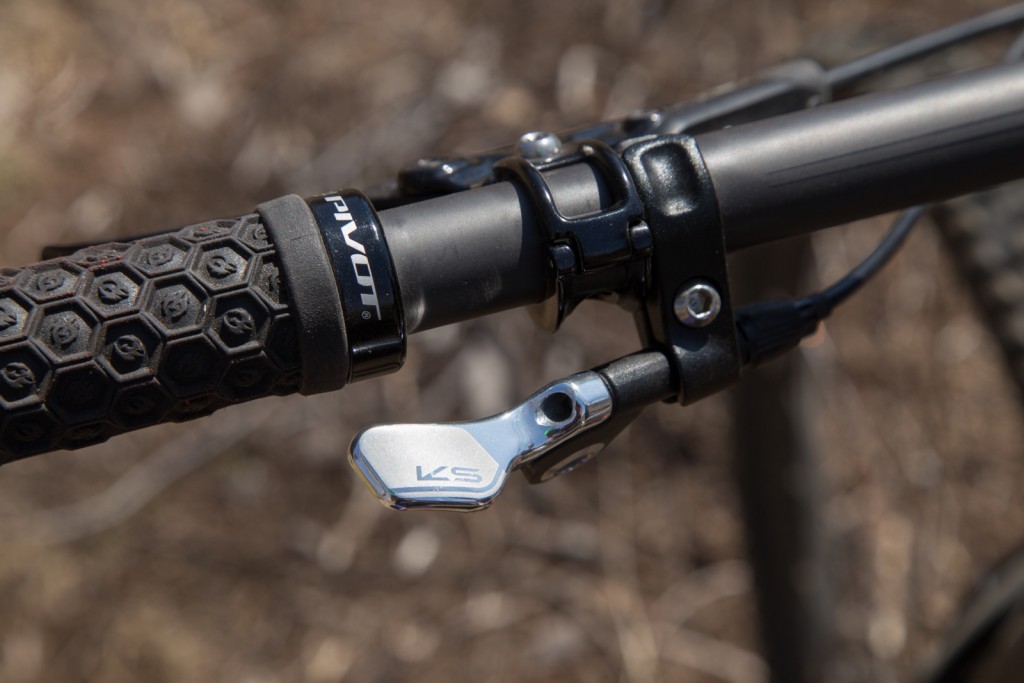
In this test I chose to swap out a few items to better fit my riding style a little more and make the bike play more towards it rowdy personality. I swapped the Fox 34 for the Rock Shox Pike because for a small weight penalty you get (what I believe) is a more stiff chassis with 35mm stanchions. Along with swapping the fork I raised the travel to 140mm from 130mm, which is OK’ed by Pivot; this slackens the head angle to 67 degrees, slightly raises the BB, and /lengthens the wheelbase minimally. To complement the newly, more aggressive stance I exchanged the 2.25 Maxxis Ardents for 2.3 Highrollers 2s and the handlebars from the stock 740mm Carbon to the DH Carbon bars, which I cut down to 780mm.
Preride thoughts:
Upon receiving the bike and amassing the parts that I would be swapping out, I carefully combed over the frame making judgements as any seasoned mechanic would. Besides the frame looking sleek and well constructed, as you would expect, my first thought was HALLELUJAH! External cable routing! This is a sight for sore mechanics’ eyes everywhere. Internal cable routing has been happening regularly since 2010, resulting in increased bike shop mechanic hostility, psychosis, vulgarity and the destruction of innocent objects to cope with defeating frustrations. Most companies nowadays are still using internal cable routing but are getting smarter with it by integrating internal tubes or making larger port holes in the frame to guide the cable and housing through. Even with the improvements in internal cable routing it was a welcome sight to see cables on the outside of the frame.
Other notes:
- There are 2 bottle cage mounts, one on the top of the down tube and one on the bottom. The suspension hardware also comes with torque specs engraved into the bolt heads, which is extremely helpful to both mechanics and consumers alike.
- The rear axle has no handle to do a tool-less wheel removal. This is fine if you carry a 6mm in one form or another with you on every ride but I feel that for a bike that comes in at nearly 6K should come with some sort of tool-less axle.
- In regards to wheels, the DT Swiss Spine-Two M1700 are slightly narrower than I would have expected/liked. They are a nice lightweight combination playing to the bikes XC personality for sure, but being at the dawn of the wider rim era they could have found something closer to complement the bike’s more boisterous personality as well – the wheels have a 22.5mm inner width.
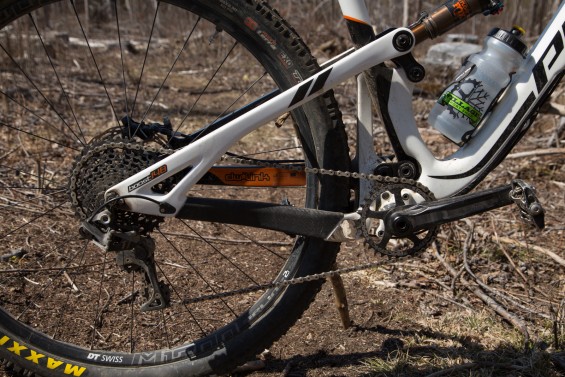 This frame also comes with Boost front and rear axle spacing. I am sure you have all heard one or another of your curmudgeonly bike snob friends gripe about the new “standard”. To be honest I did at first as well because I did not want another level of compatibility to consider as a mechanic, but this faded quickly in realizing the actual benefits of Boost. The Boost axle standard signifies a 148X12mm rear end spacing and 110X15mm front spacing which compares to the previous 142X12mm and 100X15mm respectively. Boost allows extra clearance for plus size and 29-inch tires while shortening chainstays and allows wheels to be more stiff by widening hub flanges. It also means *IN GENERAL 29ers with Boost and 27+ bikes have interchangeable wheels, so in the Mach 429 Trail’s case you can run 29” or 27+ wheels, which gives you one bike with two personalities.
This frame also comes with Boost front and rear axle spacing. I am sure you have all heard one or another of your curmudgeonly bike snob friends gripe about the new “standard”. To be honest I did at first as well because I did not want another level of compatibility to consider as a mechanic, but this faded quickly in realizing the actual benefits of Boost. The Boost axle standard signifies a 148X12mm rear end spacing and 110X15mm front spacing which compares to the previous 142X12mm and 100X15mm respectively. Boost allows extra clearance for plus size and 29-inch tires while shortening chainstays and allows wheels to be more stiff by widening hub flanges. It also means *IN GENERAL 29ers with Boost and 27+ bikes have interchangeable wheels, so in the Mach 429 Trail’s case you can run 29” or 27+ wheels, which gives you one bike with two personalities.
First Ride
Having a new bike staring at you in the living room during the down season of Kingdom Trails is like having an itch on your nether regions that you can’t scratch. In a mad dash to scratch that itch, my friend and I loaded our bikes up and escaped to warmer temps and drier ground in southern NH to the Fort Rock Trail system.
We arrived fueled by caffeine, muffins, croissants, eggs and bacon (well I did, at least); my more sensible counterpart was readied with a smoothie and trail mix. After exposing myself to the bustling road while I chamoised up, we checked sag and tire pressure, then sped off for the ride like kids who got a hold of a case of Red Bull.
Climbing
The trails started in a disappointing muddy climb, but within a few hundred yards they dried up and transformed into a post-peak fall riding scene. Leaves littered the ground, making the trail fade away if you broke concentration and made traction unpredictable at times, but the ground was hard and fast.
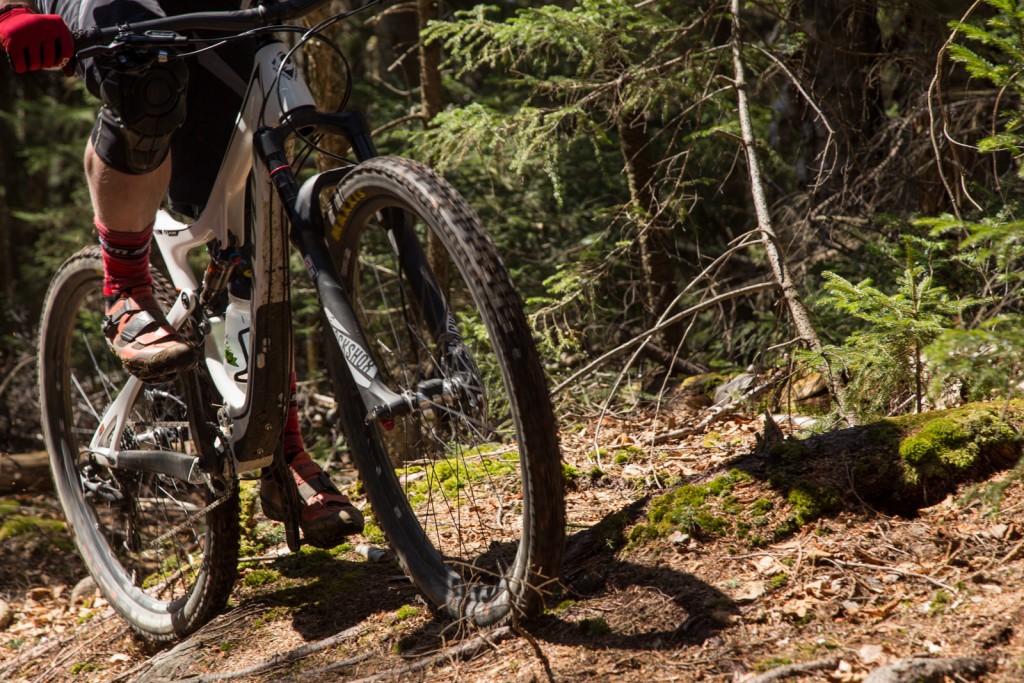
Being on a new bike, on a new trail and this being the first ride on a mountain bike in the traditional sense this year, it was hard to come to many highly accurate conclusions, but there’s one that I did come to easily. As CCR said it best: “Big wheels keep on turning”. The 29 inch wheels make big rocks smaller and gives some serious credence to Newton’s first law.
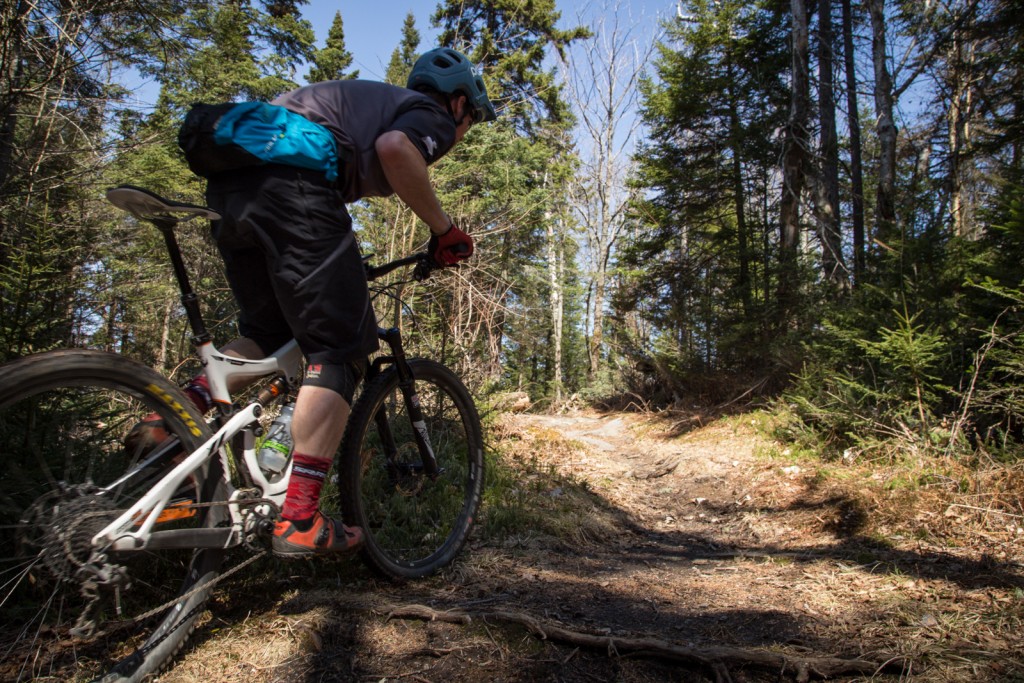
There were multiple climbs on the trail where I expected my front wheel to catch a rock, stopping it and landing my knee into some part on my bike ultimately ending in excessive profanities, but that didn’t happen at all. The large wheels took pockets of trail that 27.5’s would find themselves falling into and made them disappear. Aside from the wheels themselves making the bike Criss Angel over rocks, the DW-Link pedaled exceedingly well. Standing or sitting, I felt the bike performed comfortably in the lightweight XC race rocket category.
Descending
Descending the bike felt like it outperformed what its travel may lead you to believe. My approach to testing suspension is finding the the biggest rocks and hairiest lines, letting the brakes go and seeing how the bike does. For 116mm of rear wheel travel it absolutely decimated what Fort Rock was capable of throwing at it.
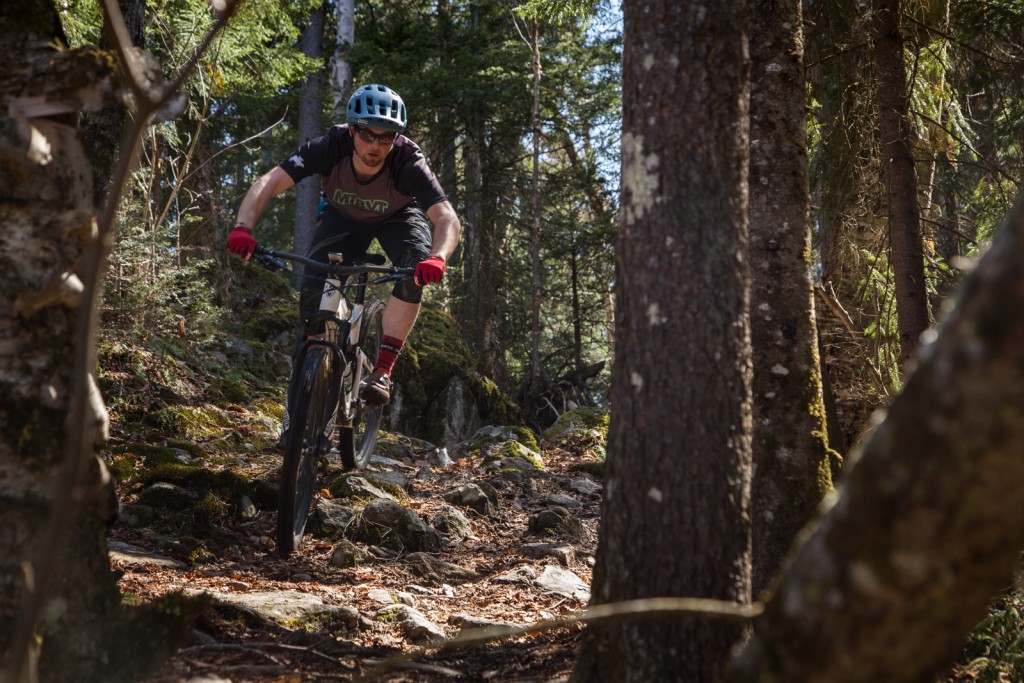
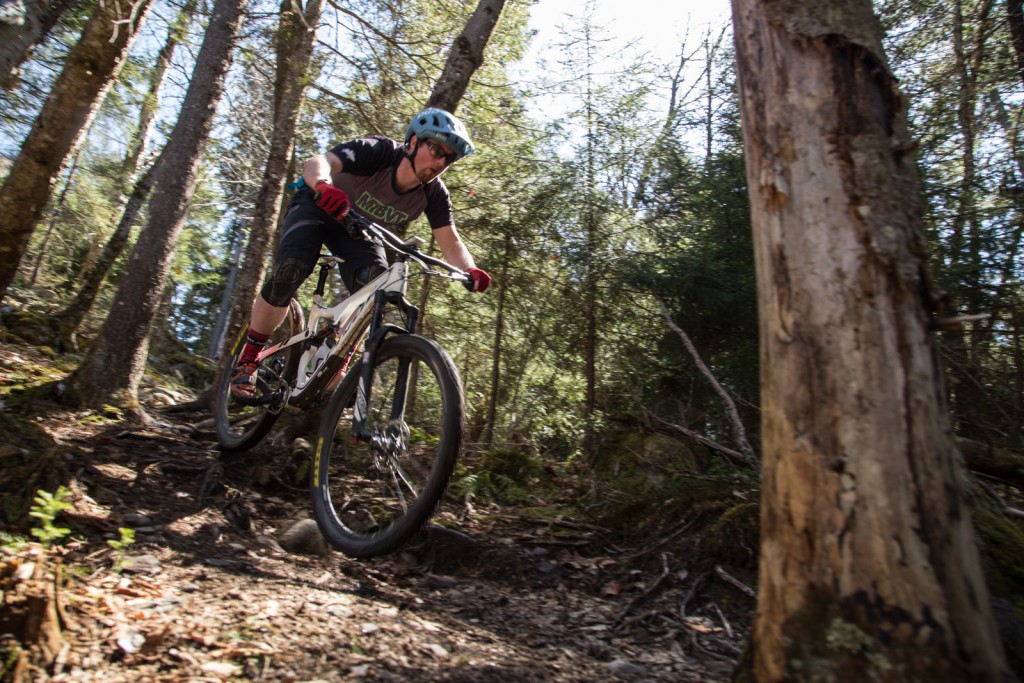
Upon finishing the ride and cracking open one of Vermont’s finest, Heady Topper, I had the premonition that this bike could be my unicorn, but unicorns don’t exist, right? Could this REALLY be the bike that I have dreamt of all winter? Something that rides as good on XC trails as it does on gnarly mountain riding? I guess only time will tell. Gulp Gulp, time to go home.
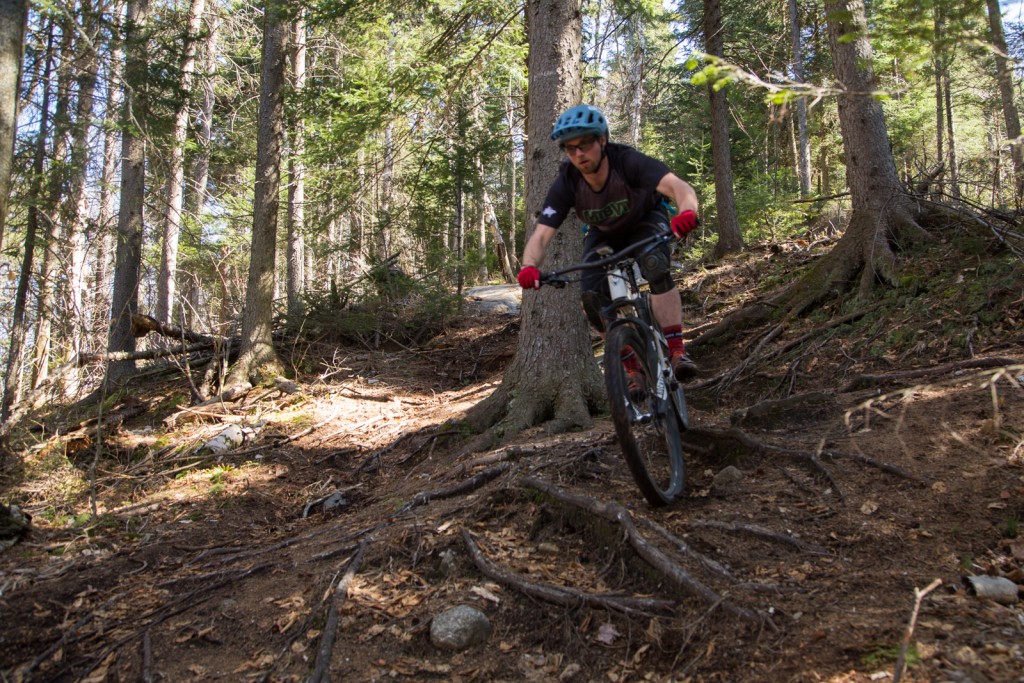
Initial setup notes*
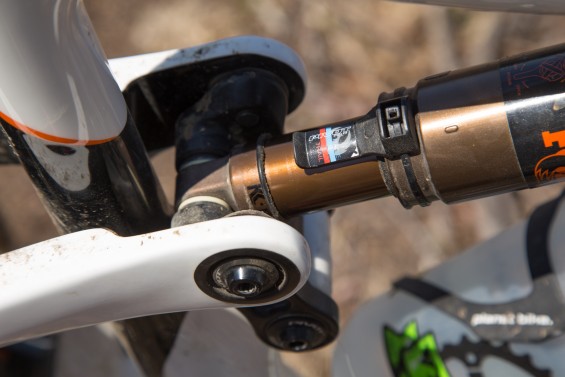 On the first ride I set the fork at 20% sag, while standing, with one additional bottomless token to the two that are preinstalled in 140 29rs. For rear suspension I was at the “Trail” sag indicator when seated which put me in the “XC” sag indication when standing. These initial settings felt good, but I think I will end up running more sag in the front to get a more supple top end and add a bottomless token for end of stroke support.
On the first ride I set the fork at 20% sag, while standing, with one additional bottomless token to the two that are preinstalled in 140 29rs. For rear suspension I was at the “Trail” sag indicator when seated which put me in the “XC” sag indication when standing. These initial settings felt good, but I think I will end up running more sag in the front to get a more supple top end and add a bottomless token for end of stroke support.
The stack height of this bike is on point with other 29rs in its category, but there is one piece that makes it feel deceivingly tall, the cone-shaped top headset piece. The stack on 29ers, especially trail/all mountain 29ers, can be tall and this cone shaped spacer just adds another 15mm to what there already is. I had my stem negative and only 1 – 10mm spacer underneath and my front wheel was floating around on some steep climbs. I took the 10mm spacer out and it is feeling better immediately, but I think ultimately I will have to remove the cone shaped spacer and replace it with a traditional top headset piece to get a stack height that feels good.
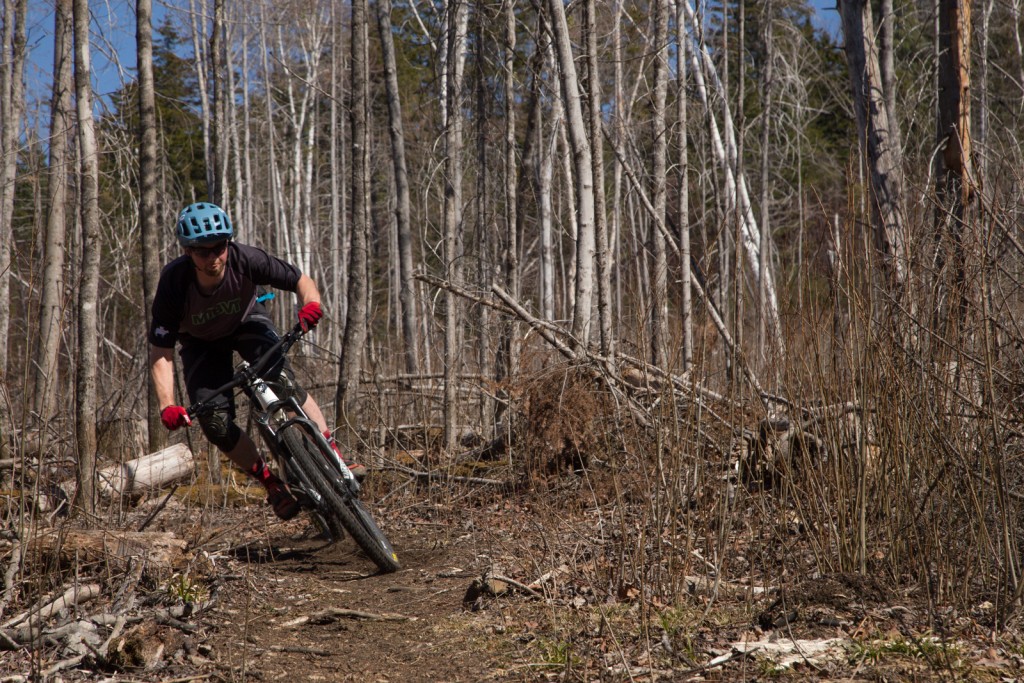
To keep up with me throughout the test follow me on: (instagram: @collin.daulong or @mtbvt) (strava: Collin KE-VSS)
Thank you for the support from: POC USA, SRAM, Village Sport Shop, Kingdom Experiences, Trail Ninja Training Camp, Sombrio, http://www.gpmsportsgroup.com/

